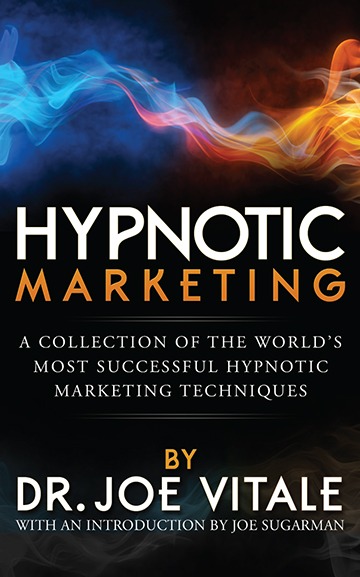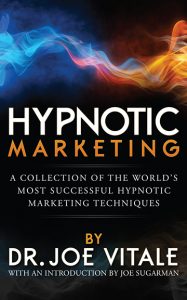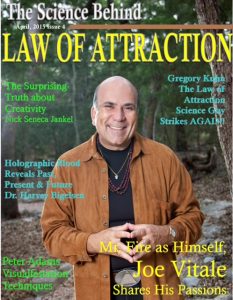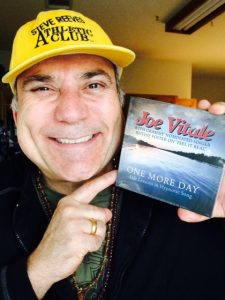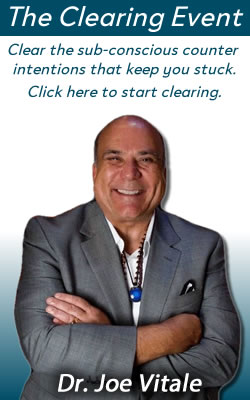Dr. Joe Vitale’s Blog
Wimberley Texas Prayer
Over the last ten years I have sometimes asked for your help.
Whether when a hurricane was about to hit, or wildfires were out of control, or a friend was dying, I would ask you to hold the intention for peace, love and a benevolent outcome.
Every time, your prayers clearly helped.
That’s why I’m writing to you today.
My city of Wimberley, Texas was devastated by the catastrophic flooding that hit us the other night.
The mainstream news will show you the graphic photos and tell you the sad stories.
They are all real.
But I want to remind you that your own intention, and prayer, are real, too, and powerful.
One thing you can do to help is pray for those in Wimberley.
But don’t pray out of sadness or fear;
pray out of faith and love.
Just take a breath, relax, and mentally send love, peace and healing to the area.
If you want, you can use The Secret Prayer that I was inspired to create.
You can hear the special prayer, and follow along as I lead you through it, at —
Just go there and scroll down to where the audio is listed.
When times get tough, many turn to the unseen for help.
Even atheists do it.
But desperation and begging are the wrong ways to go into praying.
They are low vibrations that cause the Law of Attraction to bring more to be desperate about.
Instead, focus on a higher vibration, like love, health, healing, peace, gratitude; and let the Law of Attraction bring more of those qualities.
Let’s send love to Texas.
Will you help?
Ao Akua,
PS – You can also help by going here: http://www.statesman.com/news/news/local/how-to-help-central-texas-flood-victims/nmNCY/
NOTE: Please share this message with others, as research proves that a group of people holding the same intention will trigger an acceleration of results. Together, we can help. Let’s do this. Thank you.
Flying Midgets, Burning Bras
Back in 2001 I released my magnum opus when it comes to marketing.
Titled Hypnotic Marketing, it was an e-book revealing my three-step formula for attracting more business.
It was packed with juicy stories and funny case histories, from flying midgets to burning bras, to stupid websites to outrageous ideas that worked, and more.
I just updated and released the book as a printed paperback, now more than 400 pages long, and containing zippy and zany articles as bonuses, and revealing a fourth step to the famous marketing formula.
There’s everything in this mega-book, including —
Chapter 2: How to Hypnotize the Masses with “PO” Ideas
Chapter 3: Flying Midgets and the PR Folk Hero
Chapter 4: Eight Proven Rules for Getting Publicity
Chapter 5: Pitching a Heavyweight Boxing Champion and His Sausage
Chapter 6: Show Your Bra!
Chapter 7: 21 Ways to Identify Story Ideas About You or Your Business
Chapter 8: Running Water
Chapter 9: Selling Bloody Games
Chapter 10: One of the Easiest Ways in the World to Get Publicity
Chapter 11: How to Install a “Success Wish” in Your Mind
Chapter 12: The Top Three Ways Guaranteed to ALWAYS Hypnotize the Media
Chapter 13: 10 Tips on Becoming Newsworthy from a Media Tigress
Chapter 14: The Seven Laws of Baseball’s Greatest Publicist
Chapter 15: The Psychology of Hypnotic Publicity
Chapter 16: Edgy Top Secret Ways to Absolutely Nail Media Attention
Chapter 17: How to Get Rich With P.T. Barnum’s Secret
Chapter 18: The Amazing Breakthrough Formula Called “E-DR Publicity”
Chapter 19: A New Way to Get 30 times More Replies from the Media!
Chapter 20: 14 Instant Ways to Send Out Your News
Chapter 21: Two Words that Can Get You on Virtually Any Radio or TV show
And it doesn’t stop there —
Chapter 22: Your Keys to Hypnotic Websites
Chapter 23: A Master Copywriter Reveals His Inner Secrets
Chapter 24: A Forbidden Persuasion Master Reveals His Secrets
Chapter 25: A Practical Mystic Reveals His Website Secrets
Chapter 26: Declan Dunn Shocks Me with His Website Secrets
Chapter 27: What Are the Hardest-Hitting Direct-Selling Websites Online?
Chapter 28: Some Sexy Advice from the World’s Greatest Hypnotist
Chapter 29: How to Transform a So-So Website into a Truly Hypnotic Website
Chapter 30: How An “Inspirational Folk Musician” Can Create a Hypnotic Website
Chapter 31: What You Can Learn from This Really Stupid Website
And wait! There’s more –
Chapter 32: The Secret Nobody Wants You to Know About Making Money Online
Chapter 33: How a Famous Street Magician Can Help You Create Hypnotic E-mails
Chapter 34: How to Create E-mails that Secretly Seduce Your Readers
Chapter 35: The Five Best Ways to Create Hypnotic Email Openers
Chapter 36: “How Can the Right Question Bring in 317% More Orders?”
Chapter 37: E-mail Sales Letter Samples that are Making Me Rich
Chapter 38: A Little Known Secret for Doubling Responses to Your E-Offers
Chapter 39: How to Make Even More Money With This Unusual E-mail Secret
Chapter 40: What are Five Ways to Get People to Open Your E-mail?
Chapter 41: A Truly “Killer” Hypnotic Sales Letter Used Online AND Off
Chapter 42: The World’s Most Unusual Way to Strengthen Your Hypnotic Writing
And it doesn’t even stop there, as the rest of the book is packed with info on social media marketing to “dangerous selling” to the best books on marketing, and more.
The famous three-step formula now contains a fourth step, on social media marketing.
I just read my own book as a printed paperback and loved it. 🙂
I’m not the only one to love it, of course:
“It’s Like Selling Fort Knox At A Discount”
|
“Joe, you’ve written a masterpiece. Condensing the formula for getting rich in only 79 days into three simple steps anyone can follow is brilliant! As with everything you write, ‘Hypnotic Marketing’ is crammed full of true-to-life, straight forward ways to start a welcome flow of cash into anyone’s bank account.
We all thank you for making this gem available. But, come on, Joe…that price. You’ve got to be kidding! Why would you give away so much for so little? It’s like selling Fort Knox at a discount!”
— Dr. Paul Hartunian, Author, How to Get a Million Dollars in Publicity FREE!, PrProfits.com/ezine/
“I Learned Something New On Every Page”
“Joe Vitale hypnotized me today! He did it with ‘Hypnotic Marketing,’ which I found impossible to stop reading. I learned something new on every page, and I’ve been learning about marketing since l958. Now, I can only shudder for those poor souls who haven’t yet learned what Joe has to teach. Not only does he enlighten, but he does it in such a warm and engaging way, that you cannot help but complete his book with a smile in your heart and dollar signs on your mind. Thank you, Joe, for a mighty contribution to the world of marketing.” — the late Jay Conrad Levinson, Author, Guerrilla Marketing series, JayConradLevinson.com |
If you are at all interested in marketing, online or off, publicity, websites that sell, hypnotic writing and the like, you must have this book.
It’s at Amazon as a printed book at http://www.amazon.com/Hypnotic-Marketing-Collection-Successful-Techniques/dp/1512155233/
It’s online as an e-book at http://www.hypnoticmarketing.com
Go get it.
Ao Akua,
PS – Long before I became a Law of Attraction teacher and author of such self-help spiritual books as The Attractor Factor and Zero Limits, I was known as a hypnotic writer (I wrote Hypnotic Writing, Buying Trances, There’s A Customer Born Every Minute, and many more books) and marketing specialist (having clients like The Red Cross to small and large companies to hundreds of authors and speakers). The best of that side of me is in my famous book, Hypnotic Marketing. I’m proud of that book and urge you to check it out. It’s at Amazon as a printed book at http://www.amazon.com/Hypnotic-Marketing-Collection-Successful-Techniques/dp/1512155233/ It’s still online as an e-book at http://www.hypnoticmarketing.com
Arguing for Limits
When I was in Kuwait, speaking on positive thinking and happiness, a skeptical man in the audience politely asked, “Where is the evidence that happiness will make a positive difference in my life?”
I smiled.
Even though two other speakers at the same event were recognized psychologists on happiness (one a Harvard graduate), and had already delivered compelling evidence for the benefits of positive thinking and positive psychology, this man wanted something more.
Well, I had an answer for him.
“You can find evidence for whatever you want to believe,” I replied.
“If you want to believe happiness works, then research online and you’ll find evidence to support your belief,” I continued.
“If you want to believe unhappiness is better, then research online and you can find evidence to support that belief,” I added.
And then I delivered the punch line.
“If there is evidence for both happiness and unhappiness as ways of life, which are you going to choose?”
The crowd applauded.
I don’t know if the man got the point or not. The crowd seemed to. But the polite skeptic was coming from a mindset that was arguing for his own limitations.
After all, why ask for proof that happiness is better unless you want to remain unhappy?
And why would anyone want to remain unhappy?
Author Richard Bach famously wrote, “Argue for your limitations and sure enough, they’re yours.”
Many people want to stay unhappy because they believe it serves them.
They believe it keeps them “real.”
They believe if they get happy, they may not do anything, or may be denying “reality.”
What they don’t seem to understand is unhappy people are less productive, practical, realistic, healthy, humorous or social.
I learned this back in the 1980s, when I studied with Barry Neil Kaufman, author of such books as To Love Is to Be Happy With.
Barry explained there are myths around unhappiness.
One of them is the belief that unhappiness will motivate you while happiness will not.
As Barry explained it, the truth is that unhappiness will keep you stuck, while happiness will propel you forward by the simple joy of living.
My understanding of limiting beliefs went even deeper when I started working with Mandy Evans, who I often call the original Miracles Coach.
Mandy says some of our top limiting beliefs are —
1. I should be able to make lots of money, but I can’t.
2. I do not deserve success and happiness.
3. I need to think positive every day to change my limiting beliefs.
4. If someone cheats me or betrays me I have to get even or live with resentment.
5. If I were happy, I wouldn’t do anything.
6. Feeling bad motivates me to change things.
7. If I do not give people what they want, I will end up all alone.
8. I should have worked this out by now.
9. I cannot earn a living doing something I like.
10. Better stop wanting; if you get your hopes up, you’ll just get hurt.
Mandy says for each belief that seems true, ask yourself three questions:
1. Why do I believe that?
2. What might happen if I didn’t believe that?
3. Is that true?
To better grasp all of this, read Mandy’s books, Emotional Options and Travelling Free, available from Amazon, bookstores, or http://mandyevans.com/the-breakout-store
As I’ve often said, we live in a belief driven universe; change your beliefs and you get a different universe.
You are welcome to argue for your limitations, of course, or to delete them and believe something better.
Your choice.
Ao Akua,
joe
PS — The best way to pinpoint and clear limiting beliefs is with a Miracles Coach. Just click right here.
Law of Attraction Songs
This exclusive article was first published in the April 2015 issue of The Science Behind Law of Attraction national magazine and in the April 2015 Austin All Natural Central Texas magazine. It’s mostly about the Law of Attraction songs on my latest singer-songwriter album, One More Day: Life Lessons in Hypnotic Song, which is sold out as a collectible CD/Book but now available for download on iTunes or from http://www.cdbaby.com/cd/onemoreday
Law of Attraction Songs
From The Secret movie to World’s First Self-Help Singer-Songwriter, Bestselling Author Joe Vitale Releases Fifth Album of LOA Songs
“They are like complete self-help books in 3 minute song.”
An Exclusive by Dr. Joe Vitale
If you ever felt “I can’t get what I want,” you might thank the Rolling Stones. Their music, and much popular music, innocently but effectively programs listeners for lack and limitation. Their song, “You Can’t Always Get What You Want,” started installing that limiting belief in listeners in 1969. Few think of music as an agent for programming, though. And few would look at that song as a type of brainwashing.
Yet music can slow down our progress with the Law of Attraction, and even prevent attracting what we want. It all happens unconsciously, of course. But that’s how the Law of Attraction works: you attract a match to your unconscious beliefs, not necessarily to your conscious ones.
While I like the Rolling Stones, too, I wanted to do something about music that limits. So I studied song writing, gathered experienced musicians, and recorded music that does the opposite: it joyfully rewires you to attract magic and miracles.
For example, the song “Feel It Real,” on my brand new album, One More Day: Life Lessons in Hypnotic Song, advises you to attract what you want by feeling it real. To add impact, I had Grammy nominated singer Ruthie Foster add her soaring vocals to my lyrics. Now you have a song that sounds great, feels great, and also programs you for a better life.
The song “The Hook” is a song I wrote to remind you not to take any “hooks” from other people, meaning don’t let them push your emotional buttons or engage you in a negative way. The song’s rocking mantra of “Don’t Take the Hook” becomes an awareness technique so other people don’t bring your vibration down. As long as you stay aware of “hooks” in life, you can stay peaceful, and focus on attracting what you desire.
And the title track song is a barnstorming rocker, made with Rock and Roll Hall of Fame drummer Joe Vitale (yes, he has the same name as me). It motivates you to “seize the day!” It says you have “one more day” so you better take action and go for your dreams right now. Today!
Then there’s a jazzy track called “Shock Yourself,” which is about getting out of your comfort zone. Too many of us get the same results every day because we do the same things and think the same things every day. The formula needs shaken up. The song urges you to “Jump and skip, chase away the blues…You are here to laugh and sing…You are here to live, not rust.” Again, the blend of words and music, with bass guitar by Glenn Fukunaga, flute by the other Joe Vitale, guitar by producer Daniel Barrett, come together to make a song that is hypnotic.
Music works on our body and mind in mysterious and wonderful ways. The melody can put you in a trance. I know from my work in hypnosis that when you are in even a light trance, you can accept beliefs. The words in a song can get installed in your mind. They are affirmations to music. You can become a new person in minutes with the right song. You could also become an unhappy person in minutes with the wrong song.
Every song on my new album is like a condensed self-help book. Instead of taking an entire volume to deliver the message, these songs do it in about three minutes.
For example, the song “Deep Within” points to the power center within you, beyond your mind and emotions. It guides you “deep within” to the soul or Witness behind it all. From there, you can attract whatever you imagine.
And the fun song, “Some Thoughts,” reveals that some of our thoughts are helpful and some are not. It advises you to pretend you have a “jukebox in your mind” so you can change your thoughts by reaching for the ones that make you feel good. It’s like changing a tune on the radio or on your audio player. It’s basic Law of Attraction in song.
I also have two instrumental tracks on the new album, created with me playing baritone saxophone on one and baritone guitar on the other, that are mind adventures. You can just listen as the music raises your vibration. These are also great tracks to relax to as you visualize what you want to have, do, or be.
It’s probably important to realize that I became a musician by attracting it. I wasn’t always a musician. I decided to be one when I was about 57 years old. It was on my “bucket list.” I had all the doubts and fears that anyone else might have attempting something new, but I also knew that “some thoughts” would help me become a musician and some would not. I went with the thoughts that were positive and supportive. And I made sure to “feel it real.”
Now, at the age of 61, I have eleven albums out, with One More Day being my fifth singer-songwriter offering. Many of the instrumental albums I recorded with Guitar Monk Mathew Dixon are bestsellers. I’ve also been voted #1 singer-songwriter by Reverbnation. And several of my songs have been nominated for the Posi Award, considered the Grammy’s of positive music. I’m sharing this not to brag, but to let you know that you, too, can attract your dreams. Anything is possible.
I still love the Rolling Stones, but I’m aware that unless you stay alert, their catchy tunes (and many others by other bands, not just the Stones) can help you create a reality you don’t want.
If you want to use music to help you use the Law of Attraction in more joyful ways, listen to music that is upbeat, positive, and makes you feel like the super being you really are.
Dr. Joe Vitale is the globally famous author of numerous bestselling books, such as The Attractor Factor and Zero Limits, a star in the hit movie The Secret, founder of Miracles Coaching and The Secret Mirror, inventor of Hypnotic Writing, and a man “on fire” to live his passions and help the world. His main site is www.JoeVitale.com His new album, One More Day, is at www.OneMoreDayCD.com All of his LOA albums are at http://www.allhealingmusic.com
Your Little Engine
On my recent visit to Kuwait, a smiling woman named Alaa Alothman came up to me while I was autographing books and asked something that stopped me in my tracks.
“You say that many books have influenced you throughout your life,” she began, “so I am curious what children’s book had an impact on you?”
I looked up and just stared at her.
“What a truly great question,” I announced. “I’ve never been asked that before.”
I hadn’t, either.
I went on to tell her that I’d have to think about it, as it was something I never considered.
It truly made me think.
After all, what children’s book did I read almost 60 years ago?
We talked for a few moments while my mind searched my memory banks for an answer.
And then it dawned on me.
“You know, it may sound simple, but I think The Little Engine that Could was probably the first book that inspired me as a child. I vaguely remember my mother reading it to me in the 1950s.”
Alaa smiled big, nodding her recognition of the famous book.
“The book was about an engine and my father worked on the railroad,” I said. “And the message was about believing in yourself, which I soaked up. It was probably the first self-help book I ever discovered.”
After the event in Kuwait, I became curious about the famous children’s book.
Turns out the story of the positive self-talking little engine goes back to at least 1906.
The first known use of the story is attributed to Rev. Charles S. Wing, who probably didn’t originate the story but delivered it to his congregation in Brooklyn in 1906.
It went like this:
In a certain railroad yard there stood an ex tremely heavy train that had to be drawn up an unusually heavy grade before it could reach its destination. The superintendent of the yard was not sure what it was best for him to do, so he went up to a large, strong engine and asked :
“Can you pull that train over the hill?”
“It is a very heavy train,” responded the en gine.
He then went to another great engine and asked:
“Can you pull that train over the hill?”
“It is a very heavy grade,” it replied.
The superintendent was much puzzled, but he turned to still another engine that was spick and span new, and he asked it:
“Can you pull that train over the hill?”
“I think I can,” responded the engine.
So the order was circulated, and the engine was started back so that it might be coupled with the train, and as it went along the rails it kept repeating to itself: “I think I can. I think I can. I think I can.”
The coupling was made and the engine began its journey, and all along the level, as it rolled toward the ascent, it kept repeating to itself: “I —think —I can. I —think —I— can. I —think— I —can.”
Then it reached the grade, but its voice could still be heard: “I think I can. I—– think—–I—–can. I —–think—– I—– can.”
Higher and higher it climbed, and its voice grew fainter and its words came slower:
“I ——-think ——–I——-can.”
It was almost to the top.
“I ———think”
It was at the top.
“I ———can.”
It passed over the top of the hill and began crawling down the opposite slope.
‘I ——think——- I—— can——I—– thought——I——-could I—– thought—– could. I thought I could. I thought I could. I thought I could.”
And singing its triumph, it rushed on down toward the valley.
But the best known version of the story is the book, The Little Engine that Could, published in 1930 and attributed to Watty Piper, the pen name of the publisher, Arnold Munk.
No one knows with any agreed certainty who actually originated the story.
That little story about “I think I can…I think I can…” influenced many, including me.
What children’s book influenced you?
Ao Akua,
joe
PS –My new book, The Secret Prayer, will be available soon. You can hear the actual prayer online, for free, by clicking right here.

